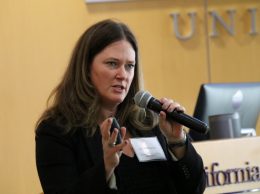Lesh: A college education should not be free

Kirk Lesh
By Kirk Lesh
Many people, including policymakers, have advocated that college tuition should be reduced or be free. From an economic and societal perspective, this is a bad idea. The American taxpayer is not keen on giving people money for nothing. Instead, we, as a society, need to think of better ways to help young people pay for college.
The problem with free tuition is the message it sends. In any introduction-to-economics course, students learn that price measures value. This is true for any good or service. Consider the following:
Who gets upset when they lose an egg that drops on the floor and breaks? Who gets upset when they see that their car has been scratched? The egg is cheap and we do not care if we break one. However, the car is expensive, and, I suspect, we all hate to see that first scratch.
In order for people to value something, they must pay for it. Thus, if we make college free, we are essentially saying that college has no value. While there is tremendous value to getting a college education, students are likely to devalue it if it is free. They will be more likely to drop a class if it is too hard, they don’t like the professor or they miss too many lectures. The class is free so they can always take it later without incurring any financial penalties.
As it is, the pricing structure for college is already problematic. Students who value education are often charged less than those students who do not. Imagine that two identical students are heading off to the same college. They are the same gender, ethnicity and socioeconomic status and they graduated from the same high school. The only difference between the students is their performance in high school. Student A was the valedictorian, while student B was an average student. Generally speaking, student A will pay less then student B because student A is likely to receive more generous scholarship offers. Universities tend to offer high-achieving students more aid to encourage them to attend. Thus, the student who already values education more pays less.
How do we as a society reconcile this inverted pricing mechanism while encouraging all students to value a college education? In my opinion, the answer is to reduce student debt after graduation.
Students should pay for college as they go to the extent that they can. Then, say six months after they graduate, a percentage of any student loan would be forgiven.
Reducing debt after graduation has two key advantages relative to free tuition. First, the pay-as-you-go mechanism will hopefully encourage students to value education. If students have to pay, they will be less likely to drop classes and more motivated to finish as soon as possible to keep loan balances at a minimum. Second, a student has to graduate in order to receive the debt reduction. This creates an effective incentive structure.
The debt reduction policy will also address the inverted pricing mechanism for college tuition if it is set up properly. Going back to our two students, let’s say student A graduated with $20,000 in debt while student B graduated with $40,000 in debt. The debt reduction policy can be set up so that student A does not receive any debt relief because that student has already received generous scholarships that helped reduced tuition. Student B would be given debt relief that would lower that student’s overall cost. Thus, the price the two students pay would be more equal than before.
As a college professor, I want students to earn a degree. Having an educated work force is in the best interest of society. However, we cannot give out degrees for free. The best things in life are those we earned.
• Kirk Lesh is an assistant professor in the California Lutheran University School of Management.












